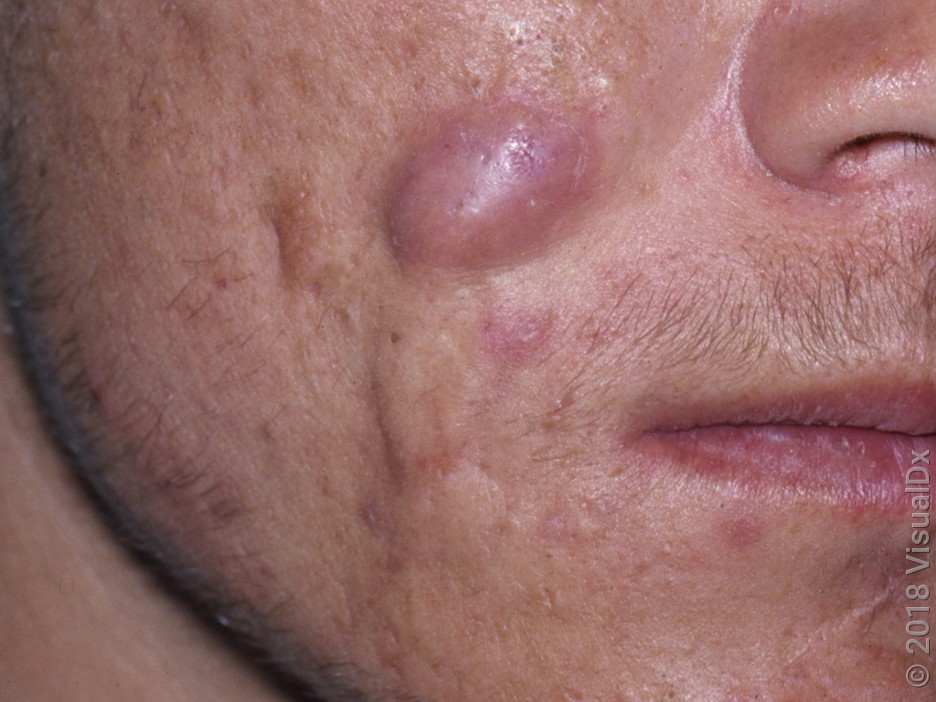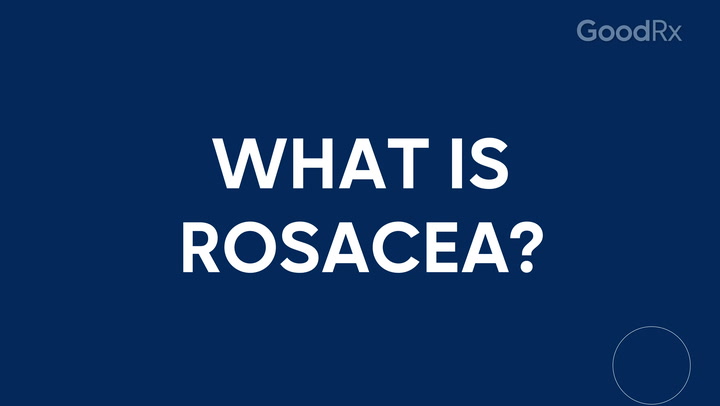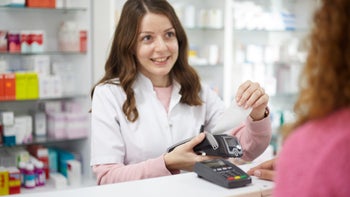
Rosacea vs. Acne: Differences and Treatments Explained (With Pictures)
Key takeaways:
Rosacea and acne are common skin conditions with some similar features, like causing breakouts on your face.
But there are some key differences between them, including who’s more likely to get rosacea versus acne.
Treatments for acne and rosacea can be similar, but they aren’t always. So, getting the right diagnosis is important.
Access savings on related medications
Table of contents

If you have pimples on your face, it could mean you have acne. But pimples could also be a sign of another common skin condition called rosacea. Both conditions have similar features: bumps that develop on your nose and cheeks. But there are some key differences between them when it comes to symptoms, age of onset, and best treatments.
Here’s how to tell the difference between acne and rosacea, including photos of each. We’ll also discuss treatment options for each condition.
What is acne?
Acne is a common skin condition that causes pimples on the face and other parts of the body, like the chest and back. It usually affects adolescents and young people, but adults and babies can get acne too.
Types of acne
There are a few different types of acne, and it’s common to have more than one at a time. Here are the main acne types:
Comedonal: Clogged pores that form whiteheads and blackheads
Inflammatory: Red, violet, or brown bumps (papules) that can be filled with pus (pustules)
Nodulocystic: Larger red, brown, or skin-colored bumps that are deep in the skin (nodules) and can be filled with pus (cysts)
Acne images
Here’s what different types of acne look like in different skin tones.



What is rosacea?
Rosacea is a chronic skin condition that causes the skin to become:
Red
Flushed
Rough
Bumpy
It typically resembles acne or a sunburn, so it’s commonly mistaken for both.
Diet and acne: From sugar to dairy, learn which foods may be triggering your breakouts.
Have a flushed face? Rosacea isn’t the only cause. Read about the top causes of a red face.
Not all face bumps are acne. From cysts to infections, learn the most common cause of facial bumps — with pictures.
Rosacea is most common on the cheeks, chin, and forehead, but it can happen anywhere on the face. It normally affects adults after the age of 30. Untreated, it can lead to permanently thickened skin around the nose and cheeks.
Types of rosacea
Rosacea is now classified and diagnosed based on common symptoms people experience. But historically, rosacea was divided into these four types:
Erythematotelangiectatic: Redness and flushing (harder to see on darker skin tones)
Papulopustular: Acne-like bumps that are red, violet, or brown and can be filled with pus
Phymatous: Thickened, bumpy, and discolored skin, usually on the nose
Ocular: Eye symptoms, like swollen eyelids or redness, burning, or itching
Rosacea pictures
Here’s what different types of rosacea look like in different skin tones.
VisualDx Image ID: 522328
Alt-text: Close-up of redness on the cheek.
Caption: Diffuse redness on the cheek.
VisualDx Image ID: 6615056
Alt-text: Close-up of papulopustular rosacea on the cheek.
Caption: Rosacea bumps and violet discoloration on the cheek.
VisualDx Image ID: 7149503
Alt-text: Close-up of nose with rosacea skin thickening.
Caption: Phymatous rosacea (skin thickening) on the nose.
VisualDx Image ID: 2682012
Alt-text: Close-up of ocular rosacea.
Caption: Ocular rosacea.
How to tell acne and rosacea apart
Acne and rosacea can both cause a bumpy rash on the face, but there are some key differences between them. Here are some ways to tell them apart:
Acne has whiteheads and blackheads, while rosacea just has bumps and pus-bumps.
Rosacea causes facial flushing, and acne doesn’t.
Rosacea can cause eye symptoms, and acne doesn’t.
Acne can appear on your chest, back, and shoulders, while rosacea is usually limited to your face.
Acne is most common in teenagers and young adults, and rosacea is most common in people over 30 years old.
Comparing acne and rosacea
| Rosacea | Acne | |
|---|---|---|
| Skin changes |
|
|
| General body area |
|
|
| Typical age of onset |
|
|
What causes acne and rosacea?
For the most part, acne and rosacea have different causes.
Acne happens when pores get clogged with too much oil and dead skin cells. When this happens, clogged pores can become infected with bacteria, which causes skin inflammation. Different factors can contribute to acne, including:
Hormonal changes (like during puberty, menstruation, or pregnancy)
A diet high in sugar or other high-glycemic foods
Certain medications (like testosterone or corticosteroids)
Scientists don’t know the exact cause of rosacea. So far, studies show that it’s most likely a combination of a few different factors, including:
Inflammation caused by an overactive immune system
Environmental factors, like chronic unprotected sun exposure
An unbalanced skin or gut microbiome (including Demodex mites that normally live on the skin, and other microorganisms on the skin or in the gut)
Widening of the small blood vessels in the skin, creating background redness and more noticeable flushing
Your genetics, meaning it can run in families
Can you get both rosacea and acne at the same time?
Yes, it’s possible to have both at the same time, but it’s not common. The typical age range for rosacea is between 30 and 60 years old, while acne is more common in teens and young adults. However, it’s possible to develop hormonal acne later in life too, at times when rosacea is also more common.
Are rosacea and acne treated the same way?
Mild cases of acne and rosacea are treated with different medications. Treatment usually includes a combination of over-the-counter (OTC) and prescription-strength creams and gels applied directly to the skin (topical). Here are some common options for each:
Rosacea treatments: Topical antibiotics that reduce skin inflammation and rosacea pimples (like Metrogel) and medications that reduce flushing by narrowing blood vessels (like Mirvaso).
Acne treatments: OTC treatments (like benzoyl peroxide) and prescription antibiotics (like clindamycin) that fight bacteria, and topical retinoids that unclog pores and improve skin cell growth (like Retin-A).
For moderate-severe acne and rosacea, there’s some overlap in the medications used to treat both conditions. Examples include:
Antibiotic pills that fight bacteria and lower inflammation, like doxycycline
Isotretinoin (Accutane or Claravis), an oral retinoid that reduces inflammation and helps skin cells grow normally
Typically, these treatments are usually used in combination with some of the topical medications listed above.
Your primary care provider or dermatologist will work with you to develop the best treatment approach for your unique situation.
Comparing treatment options for acne and rosacea
| Condition | Treatments |
|---|---|
| Acne |
|
| Rosacea |
|
How do I prevent rosacea and acne?
Any measures you can take to manage your stress will likely help prevent acne and rosacea. Try regularly making time in your schedule for meditation, yoga, breathing exercises, or spending time in nature.
Other daily habits can also lower your risk of acne breakouts:
Wash your face twice a day with your fingertips and a gentle cleanser.
Use a gentle moisturizer (opt for non-comedogenic products that won’t clog your pores).
Minimize sugar and high-glycemic foods in your diet.
Limit the amount of makeup you wear, and opt for non-comedogenic products.
Limit or avoid dairy products.
Resist the temptation to pick or touch your face.
Rosacea is a chronic condition with periods of flares followed by periods of relief (remissions). The best way to prevent rosacea is to avoid its triggers. In practice, this could mean that you:
Reduce or avoid sun exposure
Limit or avoid alcohol
Limit or avoid spicy foods
Avoid warm environments, like saunas
Limit or avoid hot beverages
What happens if you don’t treat rosacea or acne?
Most people with acne will grow out of it eventually — with or without treatment. But if your acne is severe, not treating it could mean you’re left with significant scarring. These scars can be permanent and hard to get rid of.
If you don’t treat rosacea, it tends to get worse over time. This means that facial flushing can lead to permanent redness and the development of spider veins. You may also develop acne-like breakouts and thickened areas of skin. If rosacea affects the area around the eyes, not treating it can lead to vision problems.
Untreated acne and rosacea can also affect more than your skin. Both can take a toll on a your emotional well-being and contribute to:
Depression and anxiety
Low self-esteem
Decreased quality of life
The bottom line
Rosacea and acne are common skin conditions that can both cause face breakouts. Sometimes, it can be hard to tell the difference, even though they’re completely different conditions, with separate causes and treatments. Getting checked out by your primary care provider or a dermatologist is the best way to get the right diagnosis (and the right treatment).
Why trust our experts?



Images used with permission from VisualDx (www.visualdx.com).
References
American Academy of Dermatology. (n.d.). Acne can affect more than your skin.
American Academy of Dermatology. (n.d.). Do you have to treat rosacea?
American Academy of Dermatology. (n.d.). Triggers could be causing your rosacea flare-ups.
American Academy of Dermatology. (n.d.). What is rosacea?
Feldman, S. R., et al. (2001). Women commonly seek care for rosacea: Dermatologists frequently provide the care. Cutis.
Galderma Laboratories, L.P. (2023). Epsolay - benzoyl peroxide cream [package insert]. DailyMed.
Jarmuda, S., et al. (2012). Potential role of Demodex mites and bacteria in the induction of rosacea. Journal of Medical Microbiology.
Journey Medical Corporation. (2024). Emrosi (minocycline hydrochloride) extended-release capsules, for oral use [package insert].
National Institute of Arthritis and Musculoskeletal and Skin Diseases. (2024). Rosacea. National Institutes of Health.
Tan, J., et al. (2017). Updating the diagnosis, classification and assessment of rosacea: Recommendations from the global ROSacea COnsensus (ROSCO) panel. British Journal of Dermatology.
Zhu, W., et al. (2023). Role of the skin microbiota and intestinal microbiome in rosacea. Frontiers in Microbiology.






